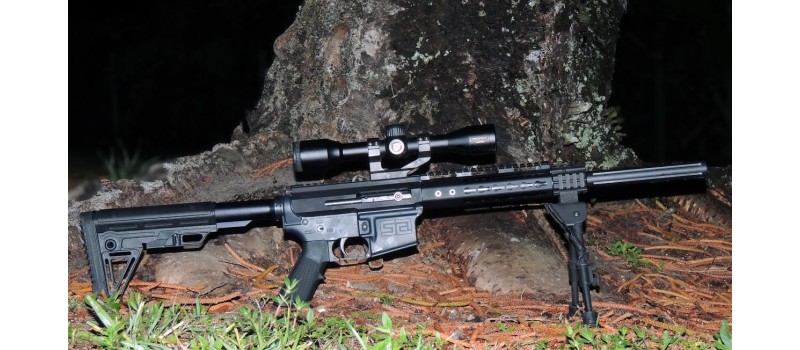When it comes to rifle rounds, there are a variety of options to choose from. Two popular choices are the 5.45x39 and 7.62x39 rounds. These rounds have been used in various firearms and have gained a following among gun enthusiasts. However, for those who are new to the world of rifles, it may be difficult to understand the differences between these two rounds. In this blog post, we will take a closer look at the 5.45x39 and 7.62x39 rounds and break down their characteristics, uses, and performance to help you determine which one may be the right choice for your shooting needs.
Unraveling the Origins of 5.45x39 and 7.62x39
The 5.45x39 and 7.62x39 rounds have intriguing origins that contribute to their unique characteristics and popularity among gun enthusiasts.
The 5.45x39 round, also known as the 5.45 Soviet, was developed in the 1970s by the Soviet Union as a replacement for the 7.62x39 round used in the iconic AK-47. The primary motivation behind its development was to improve the performance of Soviet soldiers in combat. The 5.45x39 round was specifically designed to have better long-range accuracy, reduced recoil, and increased armor penetration compared to the 7.62x39 round.
On the other hand, the 7.62x39 round has a longer history, originating in the late 1940s as the standard round for the Soviet Union's AK-47. This round was developed to be effective in close-quarters combat, providing ample stopping power and reliable performance in various environments. Its widespread adoption across the globe has made it one of the most popular rifle rounds in the world.
The 5.45x39 and 7.62x39 rounds share some similarities, as both were developed for use in rifles designed by Mikhail Kalashnikov. However, they have distinct differences in terms of performance and purpose. The 5.45x39 round is more suitable for longer-range engagements, offering greater accuracy and flatter trajectory. Meanwhile, the 7.62x39 round excels in close-quarters combat scenarios, delivering heavier bullets and higher muzzle energy.
Understanding the origins of these rounds helps us appreciate the intentions behind their development. The 5.45x39 and 7.62x39 rounds cater to different shooting needs and play essential roles in specific contexts. In the next section, we will delve into the ballistics of these rounds to gain further insights into their performance characteristics.
Diving Deep Into the Ballistics of 5.45x39 vs. 7.62x39
If you're a firearms enthusiast or someone looking to get into rifles, understanding the ballistics of different rounds is crucial. In this section, we will dive deep into the ballistics of the 5.45x39 and 7.62x39 rounds, exploring their key characteristics and how they perform in various scenarios.
Let's start with the 5.45x39 round, also known as the 5.45 Soviet. This round was designed specifically to improve long-range accuracy, reduce recoil, and increase armor penetration compared to its predecessor, the 7.62x39 round. The 5.45x39 round achieves these characteristics by utilizing a smaller, lighter bullet and a higher muzzle velocity. This combination allows for a flatter trajectory, making it easier to engage targets at longer distances with accuracy.
On the other hand, the 7.62x39 round, the standard round for the AK-47, is known for its stopping power and reliability in close-quarters combat. This round features a larger, heavier bullet, which results in higher muzzle energy and greater stopping power. While it may not have the same long-range accuracy as the 5.45x39 round, it excels in scenarios where quick target acquisition and immediate incapacitation are crucial.
When comparing the ballistics of these two rounds, it's important to consider your specific shooting needs. If you primarily engage targets at longer distances or require increased armor penetration, the 5.45x39 round may be the better choice. On the other hand, if you anticipate close-quarters combat or prioritize stopping power, the 7.62x39 round is a reliable option.
Ultimately, the decision between the 5.45x39 and 7.62x39 rounds depends on your shooting preferences and the specific application. Both rounds have their advantages and excel in different scenarios, making them valuable options for shooters. In the next section, we will explore the practical applications of these rounds, comparing their usability in various shooting environments.
Practical Applications: Comparing the Usability of Both Rounds
When it comes to choosing between the 5.45x39 and 7.62x39 rounds, practical applications play a crucial role in determining which round is the right choice for your shooting needs. Both rounds have unique characteristics that make them suitable for specific scenarios and environments.
Let's start with the 5.45x39 round. This round, also known as the 5.45 Soviet, is a great option for shooters who prioritize accuracy and longer-range engagements. Its flatter trajectory and higher muzzle velocity make it easier to hit targets at a distance. This makes the 5.45x39 round ideal for precision shooting, whether it be in competitive shooting events or hunting situations where you need to take down targets from a distance.
On the other hand, the 7.62x39 round, the standard round for the iconic AK-47, is a powerhouse when it comes to close-quarters combat. The larger, heavier bullet provides excellent stopping power, making it an ideal choice for self-defense or military applications where immediate incapacitation is crucial. Its reliability and effectiveness in various environments make it a go-to round for those who prioritize quick target acquisition and stopping power.
In terms of usability, the 7.62x39 round is more versatile, as it can be used in both AR-47 and AR-74 rifles. The availability of ammunition and firearms chambered in 7.62x39 is also more widespread, making it easier to find and purchase compared to the 5.45x39 round.
Case Studies: Real-Life Comparisons in the Field
When it comes to comparing rifle rounds, it's essential to look at real-life scenarios to see how they perform in the field. Let's dive into some case studies to see how the 5.45x39 and 7.62x39 rounds stack up against each other.
Case Study 1: Precision Shooting
In a precision shooting competition, a shooter decides to use the 5.45x39 round in their AR-74 rifle. They appreciate the round's accuracy and flat trajectory, which allows them to consistently hit targets at long distances. The lightweight nature of the round also helps reduce recoil, allowing for faster follow-up shots. In this case, the 5.45x39 round proves to be the ideal choice for precision shooting.
Case Study 2: Close-Quarters Combat
A security officer is patrolling a high-risk area and chooses the 7.62x39 round for their AR-47 rifle. They understand that in close-quarters combat, stopping power is crucial. The larger, heavier bullet of the 7.62x39 round ensures that targets are immediately incapacitated, providing the security officer with the necessary advantage. In this case, the 7.62x39 round proves its effectiveness in high-stress situations.
Case Study 3: Versatility
A shooter owns both an AR-47 and an AR-74 and wants a round that can be used in both rifles. They opt for the 7.62x39 round due to its compatibility with both firearms. This provides the shooter with the convenience of using the same ammunition in different scenarios without the need for multiple calibers.
These case studies highlight the practical applications and differences between the 5.45x39 and 7.62x39 rounds. The right choice ultimately depends on the specific shooting needs and preferences of the individual. Whether it's precision shooting, close-quarters combat, or versatility, understanding the real-life comparisons in the field can help guide your decision. Happy Shooting!







